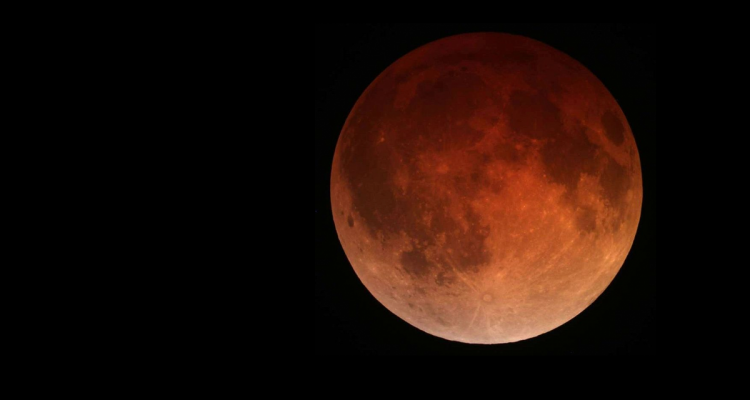Listen to the story below.
By Helen Stec
Three separate lunar events will coincide Sunday night to create the first “Super-Harvest Blood Moon” since 1982. On the evening of September 27, the full moon will slide completely through Earth’s shadow, ending the “tetrad” of four lunar eclipses that began in early 2014.
The Super-Harvest Blood Moon has only occurred five times since 1900, and according to NASA, it won’t happen again until 2033.
“Three things have to happen for this Sunday event. It has to be an eclipse, but the moon has to be at perigee—and that’s the closest distance—and they all have to be lined up with the sun,” said Dr. Cynthia Peterson, a physics professor at the University of Connecticut.
In order for this lunar event to occur, the total eclipse must converge with the full moon closest to the fall equinox, often called the harvest moon. The moon also must be at its closest lunar perigee of the year—when it is nearest to Earth. The moon will appear 13 percent larger than average Sunday night.
“It turns out that the moon is eclipsed a couple of times every year, so then an eclipse is not a big deal, but this particular one is when the moon is very close to Earth,” Dr. Peterson said.
Observers will get to witness a full moon, harvest moon, super moon, and total eclipse moon all in one.
During a lunar eclipse, the Earth casts a shadow on the moon, but because the moon’s orbit is tilted, it usually falls above or below Earth’s shadow. Due to the orbital tilt, eclipses don’t happen each time the moon completes a trip around the Earth.
Total lunar eclipses, also known as blood moons, are even rarer because they only happen when the moon is full and perfectly aligned with the sun and Earth so that the Earth’s shadow completely covers the moon’s disk. On average, this happens twice a year but can only be seen from one of Earth’s hemispheres.
“And there’s different stages. In the very beginning, it’s penumbral—that’s the partial shadow. You may not even notice it, and then it goes to a partial phase and then it goes deep into the deep full umbra, and that’s the totality phase. This one lasts about an hour and 12 minutes, so you’ve got plenty of time to watch it and take pictures,” said Dr. Peterson.
The umbra is the dark core of the Earth’s shadow. According to National Geographic, during the total eclipse, sunlight shining through the ring of the Earth’s dusty atmosphere is refracted toward the red part of the spectrum and shone onto the moon’s surface. The lunar disk can change from dark gray during the partial phase to a red or orange color during totality. Much of this coloring depends on the amount of dust in the atmosphere at the time.
Observers in the eastern United States will be able to watch every stage of the Super-Harvest Blood Moon from beginning to end. According to Sky & Telescope, the partial eclipse will begin at 9:07 p.m. and end at 12:27 a.m. The total eclipse will be visible from 10:11 p.m. to 11:23 p.m.


